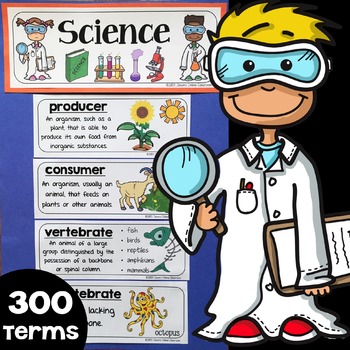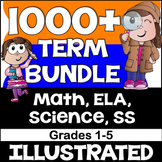Science Vocabulary Word Wall Cards with Definitions & Pictures {Focus Wall}
- Zip
What educators are saying
Also included in
- This is a bundle of ALL of our vocabulary resources at a huge discount price. Please see the individual preview files for each resource. This product is sold AS IS meaning it is NOT EDITABLE. Due to licensing restrictions on the clip art and fonts used within the file, we are not allowed to offerPrice $25.00Original Price $45.94Save $20.94
- Since I can't offer you a classroom break, at least you get a break in the price for these 125+ resources to keep your class busy all year long. Once purchased, just download the resource you need and you're set to go. Come back to your purchases at any time to download what you need at that time.Price $125.00Original Price $358.78Save $233.78
- This resource includes our CCSS I Can Statement Posters and our NGSS Science I Can Statement Posters for Grades K-5. It also includes our general vocabulary resources for ELA, Math, Science, and Social Studies. The vocabulary was custom created by us and does not align specifically to any standardPrice $61.88Original Price $111.88Save $50.00
Description
This science vocabulary word wall resource features 300 science vocabulary terms with definitions and illustrated examples. The words are presented in two different formats, word wall card size and interactive notebook size, so you are able to use this one resource for a variety of classroom objectives. Please see the preview file for a listing of all of the science vocabulary terms included herein.
Other Vocabulary Resources
BUY NOW, PRINT LATER, USE FOREVER!
Science Vocabulary Potential Uses
- Interactive Math Notebook Inserts
- Student Vocabulary Rings
- Word Wall Displays
This product is sold AS IS meaning it is NOT EDITABLE. Due to licensing restrictions on the clip art and fonts used within the file, we are not allowed to offer this as an editable document.
This science word wall vocabulary resource makes for quick and easy setup of a vocabulary bulletin board display, a science focus wall, or simply a science reference for the science interactive notebooks of your students.








